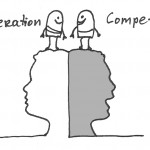Ask any developer to estimate how long it will take for them to finish a project. You will see the loathing in their eyes. And for good reason. Estimates have been wrongly used for decades by a lot of managers who then hold the team accountable to their estimate as if it were the actual deadline. Even more frustrating, in many cases, those managers only act on the lowest number they hear from you! It’s as if they had a min() function, and they just keep trying to get the number lower. But engineering is not magic!! No wonder the hashtag #NoEstimates has become famous.
For this to happen, we (well…especially managers) need to abide by a few rules. Then we’ll see how estimates can improve the quality of your software. Yup, you read that right. Well, in my opinion, obviously.












